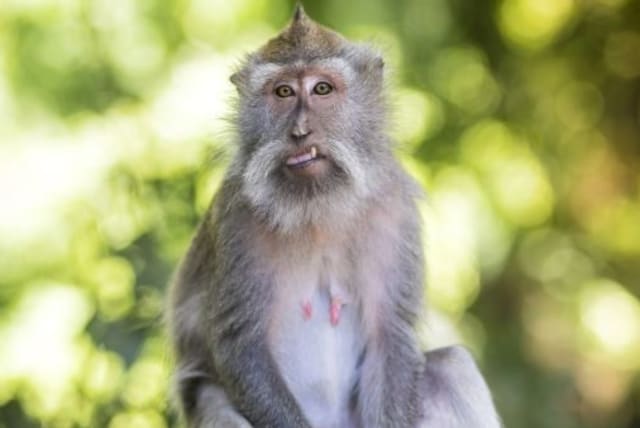As monkey and pig populations rise, so does the threat of disease

Pig and monkey populations are on the rise in Southeast Asia, largely due to human activity. Unfortunately, the drastic rise in these species' populations could threaten humans with disease.
The populations of wild boars and macaques have been exploding in Southeast Asia, largely due to human influence on their environment. This extreme population growth poses serious risks of disease being spread to people, according to a study.
The study was published in Biological Reviews, a peer-reviewed scientific journal.
In terrestrial ecosystems that have been disrupted by human or natural causes, there frequently emerges species that prove adaptable enough, not just to survive, but to thrive.
The study refers to these species as "disturbance-tolerant wildlife." This wildlife may find success in its disturbed ecosystem for a variety of reasons. These reasons could include new food sources, reduced competition due to competing species being less adaptable, predators being hunted off, etc.
For example, if a farmer clears a certain area of land to raise crops, while it may make it impossible for some species to continue living there, woodland rats or pigs may benefit from new opportunities to raid the farm's produce. As a result of a species being able to thrive in a disturbed ecosystem, its population numbers tend to increase. This increase, in turn, often leads to drastic changes in food webs, the overall structure and representation of flora and fauna in the ecosystem, and of particular danger to people, the risk of zoonotic disease.
Zoonotic diseases are diseases that are passed between animals and humans. There is a plethora of such diseases that originate in the non-human animal kingdom that have proven disastrous on a global scale.
This is precisely the risk that growing populations of wild pigs and macaques in Southeast Asia pose. The study focused on these species because "they are edge adapted, with gregarious social structure, omnivorous diets, rapid reproduction and high tolerance to human proximity.
How successful have boars and macaques been?
Indeed, both are highly adaptable species and have been successful at thriving amid the spread of monocultural agriculture in the region. For instance, as the study notes, the populations of wild boar and macaque were 148% and 87% higher, respectively, in forests that had been degraded compared to forests that were intact.
Furthermore, the populations of wild boar and macaque were 337% and 447% higher, respectively in cultivated forests that were 60% oil palm trees compared to uncultivated forests that had less than 1% coverage of oil palm. Rather than suffering from habitat loss, they seem to be taking advantage of, and feeding off of, the crops.
In addition to the obvious economic consequences of crop loss, boars and macaques, according to the study, "are linked to cascading impacts on the fauna and flora of local forest ecosystems, disease and human health." If the populations of these species continue to grow, the threat of the diseases they may spread to people may become dire.
Jerusalem Post Store
`; document.getElementById("linkPremium").innerHTML = cont; var divWithLink = document.getElementById("premium-link"); if (divWithLink !== null && divWithLink !== 'undefined') { divWithLink.style.border = "solid 1px #cb0f3e"; divWithLink.style.textAlign = "center"; divWithLink.style.marginBottom = "15px"; divWithLink.style.marginTop = "15px"; divWithLink.style.width = "100%"; divWithLink.style.backgroundColor = "#122952"; divWithLink.style.color = "#ffffff"; divWithLink.style.lineHeight = "1.5"; } } (function (v, i) { });

